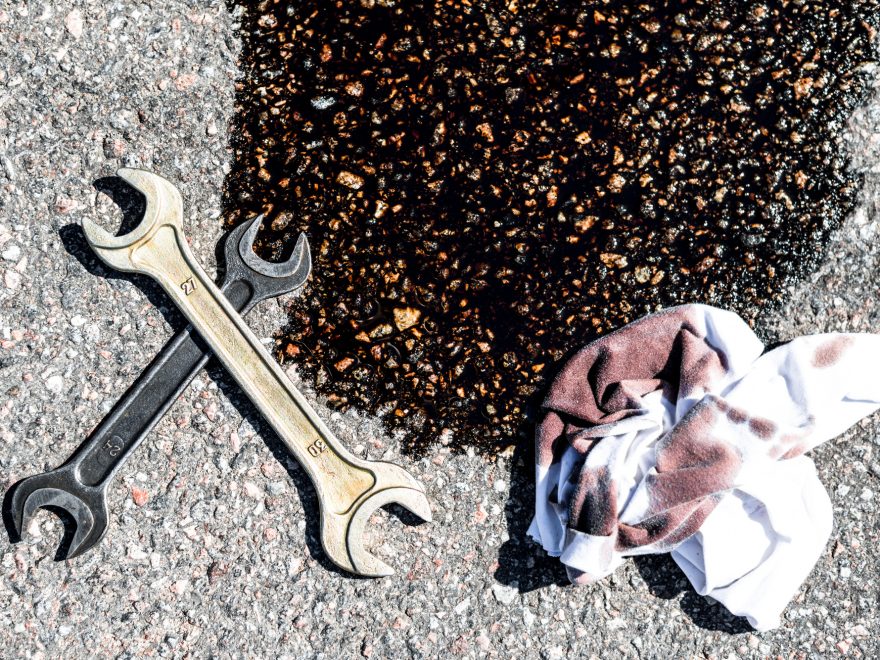Car and automotive maintenance frustrate many. Keeping a vehicle running smoothly costs either time or money and sometimes both.
Without routine maintenance, issues can spiral and the costs in time and money grow.
Issues that can affect the engine rank among the most costly of repairs.
With that in mind, learning to check for and repair a coolant leak doesn’t have to be a hassle.
Coolant Leak Signs
The first step to repairing a coolant leak is identifying if that is the issue. The following quick list provides DIY ways to look for the tell-tale signs of damage.
Puddles
Nothing instills a fear of dread in a car owner quite like seeing a pool of something under the vehicle. Puddles may not be signs of catastrophic failure but they clearly don’t represent business as usual.
Puddles should be checked for color (orange, blue, green, or rust). The smell of coolant is usually wet and can be a bit sweet.
Dispose of fluids responsibly to avoid contamination fo groundwater and harm to animals.
Radiator
Signs of damage and leaks along the radiator make the next most obvious place to check. Whitish deposits along the edges indicate places where old leaks have dried. A person can also check for leaks by touch when the car is at rest.
Hoses
Hose connections should be soft and a bit squishy. When a hose becomes brittle and hard it will likely split. Again, like the radiator, whitish deposits show remnants of leaks.
Pressure Cap
Pressure safety caps allow proper release of superheated fluids to release in the form of steam. A broken or damaged cap will leak and come unsealed, causing major leaks.
Coolant Leak Fixes
Once a leak is identified, a motorist decides if they can repair it themselves or needs help from a mechanic. Finding a mechanic in the area is easy.
Radiator
Most radiator repairs can be done by laymen. Patch kits are sold at many auto stores. Patch kits come with all the needed materials and detailed instructions.
If the radiator appears to be leaking from a seam, a mechanic or welder may be needed to repair that damage.
Hoses
Hose replacements can be done so quickly and easily some motorists have extra on hand and replace them at the first sign of trouble.
Hoses string between two areas. Those doing a repair themselves should be careful in removing the hose not to damage the lever.
Water Pump
Water pumps can have issues with the bearings or the drive belt. If a water pump rocks easily back and forth then the bearings need to be replaced. Replacing the gasket or tightening flange bolts fix leaks in the area.
Worn pumps should be replaced. A pump becomes worn when more than one part seems to be failing at once.
More Repair Advice
For those looking for more DIY automotive repairs and tips, they can check out information on the blog. Remember, those that take care of a vehicle now will save money tomorrow.

